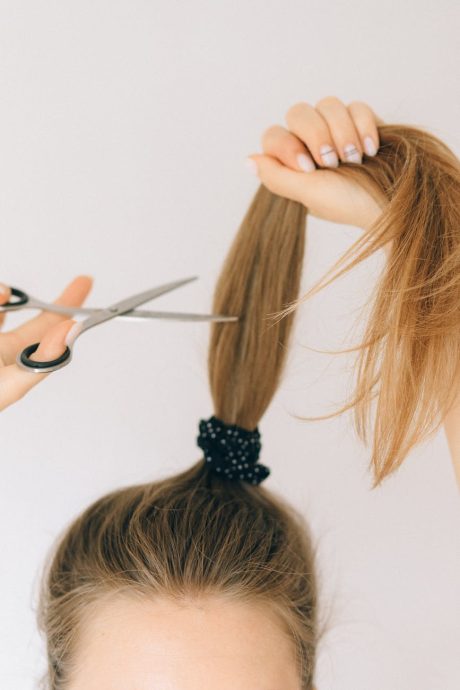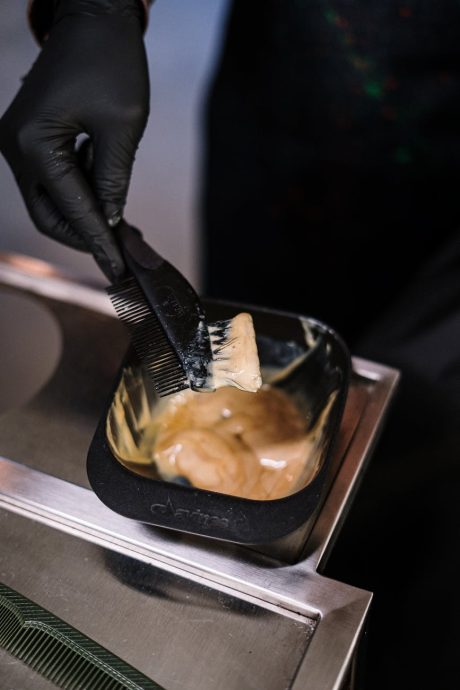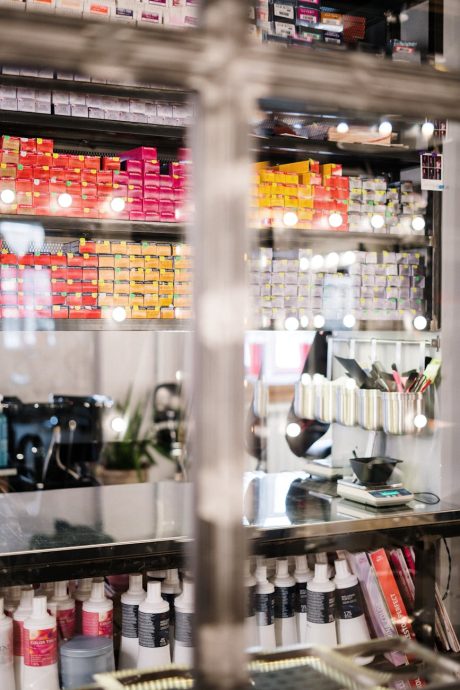Remove a hair color mistake can feel like a frantic, high-stakes mission. That moment you rinse, towel-dry, and look in the mirror only to see a shade that’s too dark, too brassy, or just plain wrong can send anyone into a panic. The good news is that a dye disaster is rarely permanent. Whether you were experimenting with a box dye or a salon visit went awry, there are effective ways to correct the color and restore your hair’s harmony. Before you reach for another box of dye or book a panicked (and expensive) salon appointment, take a deep breath. This guide will walk you through the steps to assess the situation and choose the best method for fixing your hair color mishap.

Table of Contents
Introduction
We’ve all been there: staring at a reflection that doesn’t feel like our own after a fresh dye job. A hair color mistake is a common beauty blunder, but it doesn’t have to be a catastrophe. The key is to act thoughtfully rather than impulsively. The right solution depends entirely on the type of dye used (permanent, semi-permanent), the nature of the mistake (too dark, uneven, wrong tone), and the current health of your hair. From gentle at-home remedies to powerful professional-grade solutions, you have options. This article will explore the safest and most effective ways to reverse a hair color you regret, putting you back in control of your look.
First Steps: Assessing the Situation

Before you do anything, stop and assess the damage. Acting too quickly can often make the problem worse. Give your hair 48-72 hours. Why? Firstly, hair color can look different in various lighting conditions and can even “settle” or oxidize slightly after the first couple of days. Secondly, washing your hair a few times with your regular shampoo can naturally cause some fading, especially with semi-permanent dyes.
Once you’ve waited, identify the specific problem:
- Is it too dark? This is one of the most common issues and often the easiest to fix gently, as you’re looking to lift the color out.
- Is it too light or brassy? This requires adding color or toner, not removing it. Stripping methods will only make it lighter and more brassy. You may need a toner or a color-depositing gloss.
- Is it patchy or uneven? This can be complex and often requires a professional to ensure the color is blended correctly without causing more damage.
- Is it simply the wrong shade? If you wanted ash blonde and got strawberry blonde, the underlying pigments are incorrect. This might require more than a simple removal.
Finally, check your hair’s condition. Is it dry, brittle, or showing signs of damage? If so, you must prioritize gentle methods and avoid harsh chemicals like bleach.
Gentle At-Home Methods to Remove a Hair Color
If your hair is in decent condition and the color is only slightly off or too dark, a gentle at-home approach is the best place to start. These methods are designed to gradually fade the color without causing significant damage.
1. Clarifying Shampoo
A clarifying shampoo is formulated to remove product buildup, minerals, and grime from your hair. It’s more potent than regular shampoo and can effectively strip some of the fresh, excess color molecules from your hair shaft. Wash your hair several times with a clarifying shampoo, letting the lather sit for a few minutes each time before rinsing. Always follow up with a deep conditioning treatment, as clarifying shampoos can be very drying.
2. The Vitamin C Method
This popular DIY trick uses the power of ascorbic acid to oxidize the dye and break it down. Crush 10-15 vitamin C tablets into a fine powder and mix it with a clarifying or anti-dandruff shampoo to form a thick paste. Apply the paste to damp hair, cover it with a shower cap, and let it sit for 30-60 minutes. Rinse thoroughly and follow with a nourishing hair mask. This method is surprisingly effective at lifting out 1-2 shades of semi-permanent or recently applied permanent color.
3. Baking Soda Paste
Baking soda is a natural cleansing agent that can help lighten hair dye. Mix equal parts baking soda and a clarifying shampoo to create a paste. Apply this to damp hair, work it through from roots to ends, and let it sit for about 15-20 minutes. Baking soda is alkaline and can be harsh, so do not leave it on for too long and be sure to deep condition afterward.
Using Commercial Color Removers

If gentle methods aren’t cutting it, your next step is a dedicated color remover. These products are specifically designed to shrink the artificial color molecules in your hair, allowing them to be washed away. Crucially, most mainstream color removers (like Color Oops or Colour B4) do not contain bleach or ammonia. They won’t restore your natural hair color if you previously lightened it, but they will remove the artificial dye you added on top.
Follow the instructions on the box to the letter, especially the rinsing step. The rinsing process is what washes the shrunken color molecules out. If you don’t rinse long enough (often 20 minutes or more), the molecules can re-oxidize and the color will return. Be prepared for a distinct sulfur smell, and have a deep conditioner ready to restore moisture.
When to See a Professional

Sometimes, a DIY fix isn’t the answer. You should wave the white flag and book an appointment with a trusted colorist if you encounter any of the following situations:
- Your hair is severely damaged: Adding more chemicals to brittle, over-processed hair is a recipe for disaster. A professional can use bond-building treatments and gentle techniques to correct the color without causing breakage.
- The color is extremely patchy: Correcting splotches and bands requires a strategic application that is nearly impossible to do on your own.
- You need to remove black box dye: Black dye contains a high concentration of pigment and is notoriously difficult to lift evenly.
- You’ve had a bleach disaster: If your hair has turned orange, yellow, or has a gummy texture, you need professional intervention immediately.
- You want a drastic change: Going from a dark color mistake to a light blonde requires expert-level skill to avoid uneven results and severe damage.
A professional colorist has access to tools, techniques, and products that aren’t available to consumers. They can perform a “bleach wash” for a gentle lift, use targeted foil placements to correct unevenness, and custom-mix toners to neutralize any unwanted shades perfectly.
Conclusion
A hair color mistake can be disheartening, but it’s almost always a solvable problem. The best approach is to start with the least invasive method first, evaluating your hair’s health and the specific nature of the issue. Clarifying shampoos and Vitamin C treatments can work wonders for minor errors, while dedicated color removers offer a more powerful, bleach-free solution for stubborn dyes. However, it’s equally important to know your limits. For major color corrections, patchy results, or severely damaged hair, investing in a professional colorist is the wisest choice. With a little patience and the right technique, you can successfully erase your hair color mistake and get back to feeling confident and beautiful.






